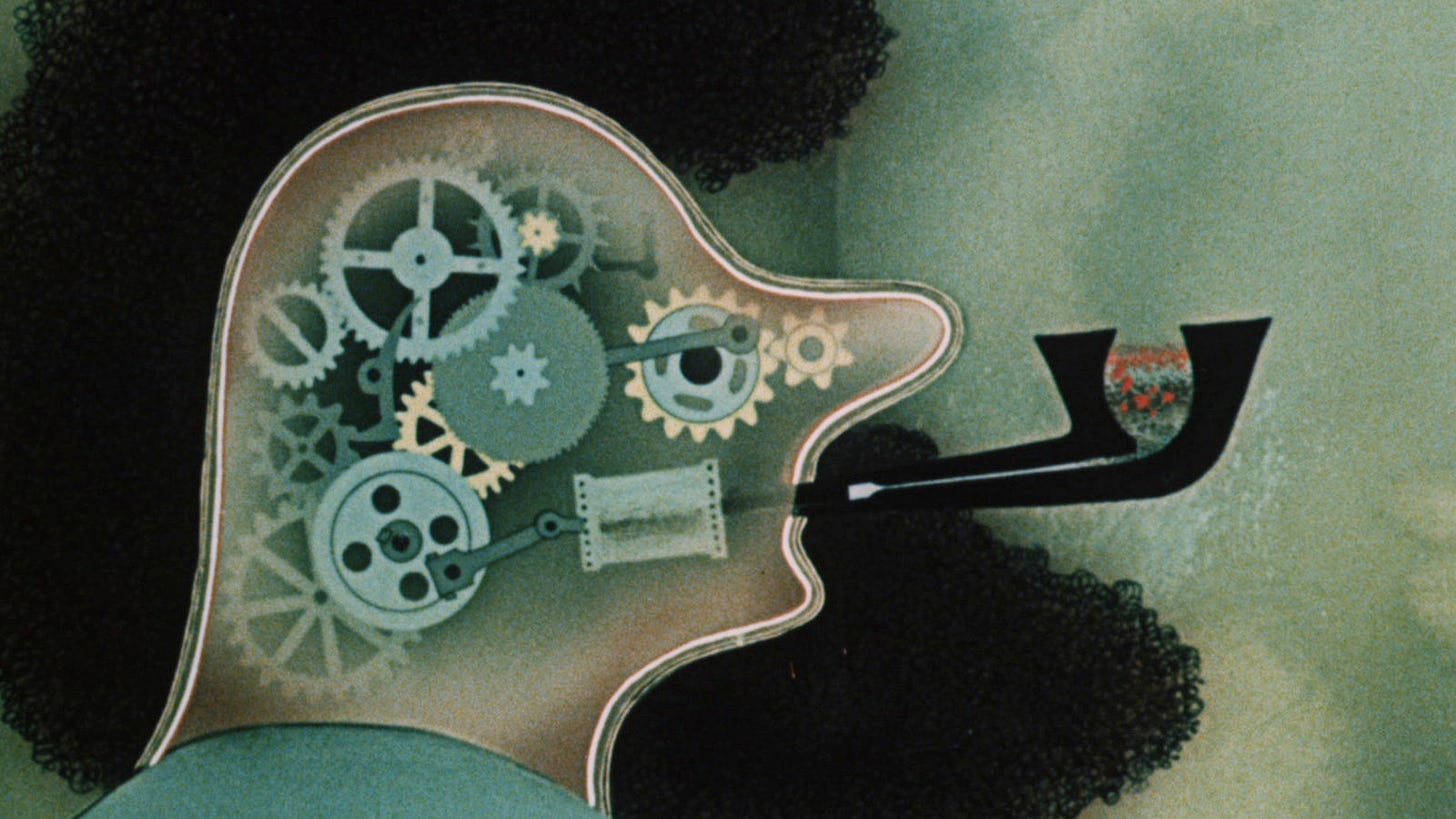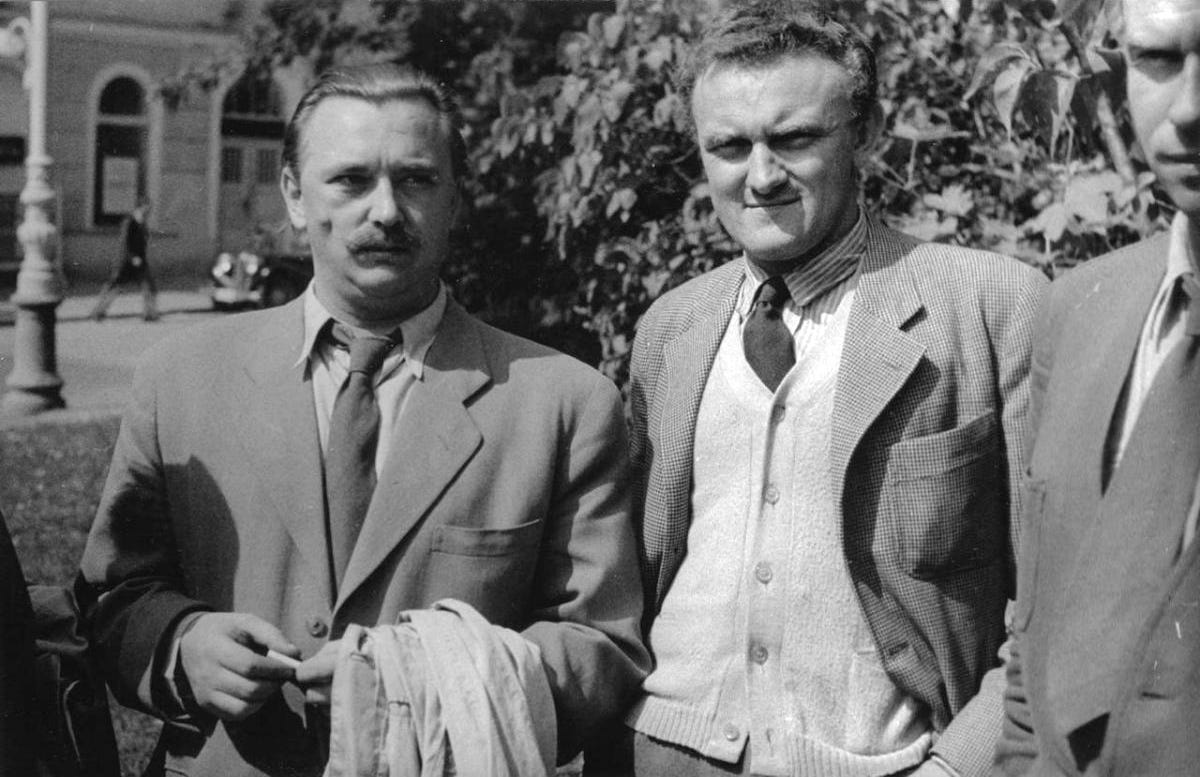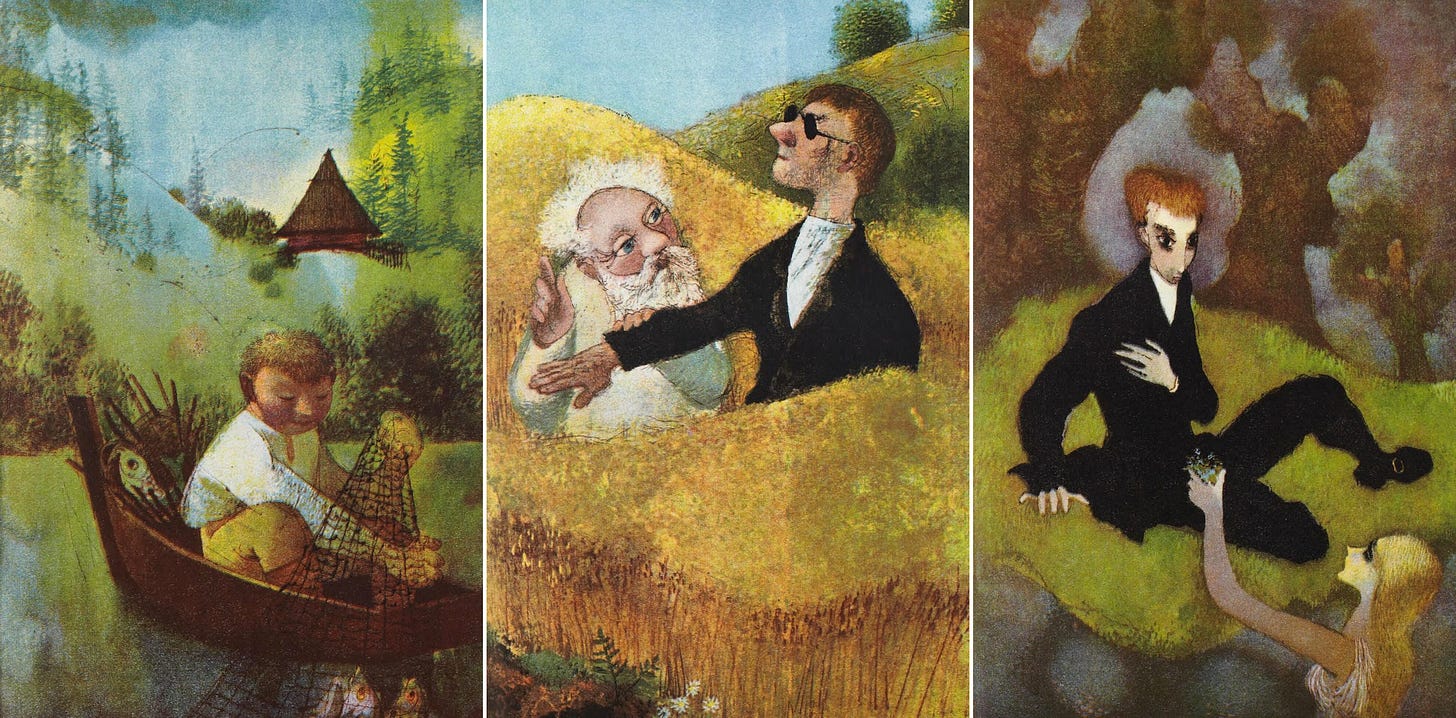+6: Two Czech Cartoons That Changed the World
How Jiří Trnka gave a 'Gift' to Yugoslavia — and all of us.

Welcome to the sixth bonus issue of the Animation Obsessive newsletter! Thanks for stopping by.
This week, our topic is a pair of cartoons by Jiří Trnka, the grandmaster of Czech animation. They’re called The Gift and Springman and the SS. Both came out in 1946. World War II was freshly over, the Czechs were free — and Trnka was forging new forms of animation.
These two pieces from Trnka had a huge impact, and not just among Czechs. They became guiding lights for the Zagreb School of Animation. By some accounts, Trnka’s work even influenced UPA. We’ll explore all of it today.
Enjoy!
If you’ve heard of Jiří Trnka, you probably know him as a master of puppet animation. And that’s true — but it’s not how he got his start. Before he did beautiful pieces like A Midsummer Night’s Dream, Trnka worked in 2D cartoons.
The story starts in June 1945. Prague was rebuilding after the fall of the Nazi occupation about a month before. Animators from the city’s main cartoon studio, AFIT, approached Trnka with an offer. They wanted him as their artistic director. “They came, spoke nicely and so I started doing it with enthusiasm,” Trnka recalled.
A respected illustrator in his mid-30s, Trnka had essentially no background in animation. But, with this new job, he would remake Czech cartoons from the ground up.
It was a much-needed revival. AFIT had spent years under Nazi control, with a list of particularly bad managers. Břetislav Pojar, an animator at the studio, remembered his time there like this:
The owner was an Austrian architect with ambitions to become something between a European Disney and Richard Wagner. He liked to do operas in cartoon. Unfortunately, he had a very limited imagination. Everything we drew was rotoscoped from poorly-acting opera singers. The results were awful. At the same time, we were learning basic animation by secretly studying a few prints of Disney films.
With Trnka at the helm, the animators repurposed what they’d learned from their Disney knock-offs, like Wedding in the Coral Sea (1944). At the new studio Bratři v Triku, they staked out a uniquely Czech style of animation.
Trnka’s first film as a director, Grandpa Planted a Beet (1945), still has some Disney in it. But there’s something else there, too. “Our films were based more on story than on comic characters,” Pojar noted, “while our graphic style was taken from that of Czech book illustration.”
Because Trnka was an amateur director, he leaned on his experience in illustration and puppet theater for inspiration. They “protected him from imitation,” in the words of one writer.1 Trnka found his own way and quickly caught the world’s eye — winning an award at Cannes in 1946.
But it was Trnka’s third and fourth 2D cartoons that changed everything. When they came out in ‘46, The Gift and Springman and the SS looked like nothing else. “Within one year we had developed our own style of cartooning, different from mainstream American animation,” Pojar wrote simply.
Watching The Gift, it almost doesn’t compute. The visual design is flat and graphic, years before that was common. The motion isn’t Disney or Fleischer — characters move in an abstract way that suits their abstract look. It’s like Trnka and his team stumbled across UPA-style solutions all by themselves.
It’s not just the art that’s groundbreaking. The camerawork and editing feel decades ahead of their time. And the film has a surrealist edge, subverting itself with weird twists and strange visuals, like the flattened dog or the false backdrop that becomes a real department store.
The Gift is a satire of the type UPA would later make. Its target is filmmaking. In the live-action frame story, we watch a screenwriter act out his pitch to a producer — he plays both roles himself. As the cartoon continues, the producer changes the story in real time, Duck Amuck-style. This becomes very funny after a very short time.
Keep reading with a 7-day free trial
Subscribe to Animation Obsessive to keep reading this post and get 7 days of free access to the full post archives.




